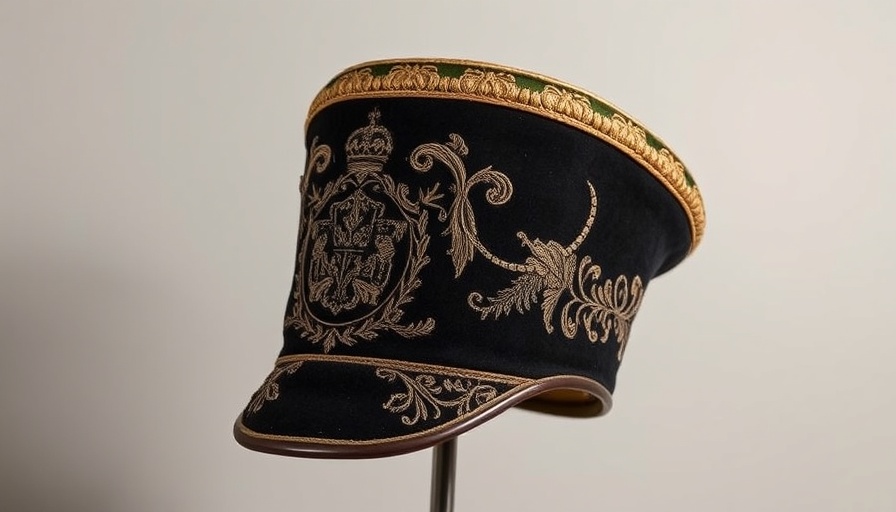
Discover the Unique Legacy of Napoleon's Bicorne Hat
On June 25, 2025, Sotheby’s Paris will host what could be a historic auction, featuring the remarkable bicorne hat of none other than Napoleon Bonaparte. This hat, a testament to the Emperor’s enduring legacy, is expected to fetch upwards of €800,000, showcasing how collectibles can connect us to pivotal moments in history. Collectors and enthusiasts alike will stand to gain not just a physical artifact, but a piece of the dramatic narrative that surrounded one of the world’s most renowned figures.
The Hat That Rewrote Fashion Standards
Unlike conventional military wear, Napoleon’s unique take on the bicorne—worn sideways, or ‘en bataille’—distinguished him from his contemporaries and contributed to his iconic status. This style hasn’t just remained a relic of the past; it holds a rich historical significance, evolving over time and influencing military fashion across Europe. As collectors delve into acquiring such memorabilia, it serves as a reminder of how personal style signifies authority and leadership.
Connecting to the Art of Collecting History
For many top wage earners in Philadelphia and beyond, collecting has become a pursuit filled with personal gratification. Every bid at auction isn’t just about the item, but about acquiring a story. Pierre-Jean Chalençon, the collector behind this auction, perfectly encapsulates this passion. His lifelong dedication to assembling artifacts that span Napoleon’s fascinating life results in a collection that weaves tales of ambition, power, and even vulnerability. With pieces that include personal effects such as Napoleon’s camp bed and complete provenance from his closest circles, collectors are given a chance to own history in a way that few can imagine.
Trends in Historical Collectibles
As interest in Napoleon and historical collectibles rises, we see a parallel with current cultural trends. Historical relics can resonate deeply with today’s collectors, granting them not only a material possession but also a connection to the great narrative arcs of the past. Moreover, the trend reflects a growing desire among affluent individuals to invest in meaningful items that encapsulate stories, rather than just conventional assets. It raises a vital question for potential buyers: What narrative will your next collectible tell?
A Unique Opportunity for Local Collectors
This auction isn’t just another event; it’s an exceptional opportunity for local collectors to seize their piece of French history. With the rising value of Napoleonic memorabilia and its recent resurgence in popular media and scholarship, acquiring such an item could not only prove to be a wise investment, but also a way to engage with the past like never before. As Philadelphia’s affluent community welcomes more diverse interests, this auction stands out as a moment where local collectors might find new inspirations.
This event is more than a sales pitch; it’s an invitation to dive into history and reflect on how past leaders shape our understanding of leadership and ambition today. Are you ready to explore collecting as a bridge to the past?
 Add Row
Add Row  Add
Add 




Write A Comment